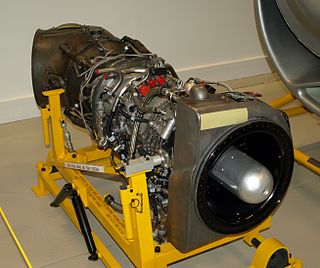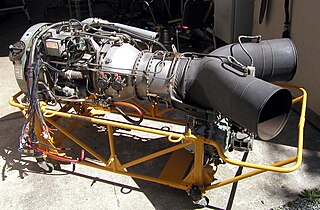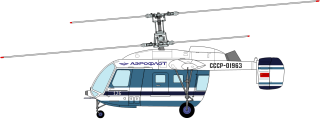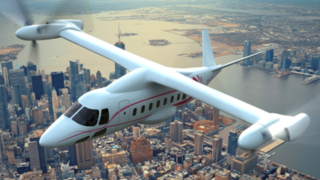
The EurocopterAS365 Dauphin (Dolphin), also formerly known as the Aérospatiale SA 365 Dauphin 2, is a medium-weight multipurpose twin-engine helicopter produced by Airbus Helicopters. It was originally developed and manufactured by French firm Aérospatiale, which was merged into the multinational Eurocopter company during the 1990s, and since 2014 Eurocopter was renamed Airbus Helicopters. Since entering production in 1975, the type has been in continuous production for more than 40 years, with the last delivery in 2021. The intended successor to the Dauphin is the Airbus Helicopters H160, which entered operational service in 2021.

The Westland Lynx is a British multi-purpose twin-engined military helicopter designed and built by Westland Helicopters at its factory in Yeovil. Originally intended as a utility craft for both civil and naval usage, military interest led to the development of both battlefield and naval variants. The Lynx went into operational usage in 1977 and was later adopted by the armed forces of over a dozen nations, primarily serving in the battlefield utility, anti-armour, search and rescue and anti-submarine warfare roles.

The Agusta A129 Mangusta is an attack helicopter originally designed and produced by Italian company Agusta. It is the first attack helicopter to be designed and produced wholly in Europe. It has continued to be developed by AgustaWestland, the successor company to Agusta. It has been exclusively operated by the Italian Army, which introduced the type to service during 1990.

Safran Helicopter Engines, previously known as Turbomeca, is a French manufacturer of low- and medium-power gas turbine turboshaft engines for helicopters. The company also produces gas turbine engines for aircraft and missiles, as well as turbines for land, industrial and marine applications.

The Rolls-Royce Turbomeca RTM322 is a turboshaft engine produced by Safran Helicopter Engines. It was originally conceived and manufactured by Rolls-Royce Turbomeca Limited, a joint venture between Rolls-Royce plc and Turbomeca. The engine was designed to suit a wide range of military and commercial helicopter designs. The RTM322 can also be employed in maritime and industrial applications.

Rolls-Royce Turbomeca Limited (RRTM) is a joint venture between British aero-engine manufacturer Rolls-Royce plc (UK) and French helicopter engine specialist Safran Helicopter Engines. It manufactured aero-engines and provided associated support services to end users.

The Fairey Rotodyne was a 1950s British compound gyroplane designed and built by Fairey Aviation and intended for commercial and military uses. A development of the earlier Fairey Jet Gyrodyne, which had established a world helicopter speed record, the Rotodyne featured a tip-jet-powered rotor that burned a mixture of fuel and compressed air bled from two wing-mounted Napier Eland turboprops. The rotor was driven for vertical takeoffs, landings and hovering, as well as low-speed translational flight, but autorotated during cruise flight with all engine power applied to two propellers.

The Sikorsky S-76 is a medium-size commercial utility helicopter designed and produced by the American helicopter manufacturer Sikorsky Aircraft. It is the company's first helicopter specifically developed for the civilian market.

The PZL SW-4 Puszczyk is a Polish light single-engine multipurpose helicopter manufactured by PZL-Świdnik. Following a protracted development, the SW-4 entered service in 2002, the primary operator of the type has been the Polish Armed Forces. The SW-4 was further developed by PZL-Świdnik and corporate parent AgustaWestland into an optionally piloted vehicle, the SW-4 Solo. From 2016 onwards, the type has been marketed to civil operators as the AW009, while the SW-4 designation is used for the military market.

The Bell 407 is a four-blade, single-engine, civil utility helicopter. A derivative of the Bell 206L-4 LongRanger, the 407 uses the four-blade, soft-in-plane design rotor with composite hub developed for the United States Army's OH-58D Kiowa Warrior instead of the two-blade, semi-rigid, teetering rotor of the 206L-4.

The Westland Scout is a light helicopter developed by Westland Helicopters. Developed from the Saro P.531, it served as a land-based general purpose military helicopter, sharing a common ancestor and numerous components with the naval-orientated Westland Wasp helicopter. The type's primary operator was the Army Air Corps of the British Army, which operated it in several conflict zones including Northern Ireland and the Falklands War.

The Rolls-Royce Gnome is a British turboshaft engine originally developed by the de Havilland Engine Company as a licence-built General Electric T58, an American mid-1950s design. The Gnome came to Rolls-Royce after their takeover of Bristol Siddeley in 1968, Bristol having absorbed de Havilland Engines Limited in 1961.

The Bristol Siddeley Nimbus, later known as the Rolls-Royce Nimbus, was a British turboshaft engine developed under license by Blackburn Aircraft Ltd. from the Turbomeca Turmo in the late 1950s. It was used on the Westland Scout and Westland Wasp helicopters.

The Rolls-Royce Gem is a turboshaft engine developed specifically for the Westland Lynx helicopter in the 1970s. The design started off at de Havilland Engine division and passed to Bristol Siddeley as the BS.360. Rolls-Royce bought out Bristol Siddeley in 1966 and after it dropped the Bristol Siddeley identity the engine became the RS.360.

The General Electric T700 and CT7 are a family of turboshaft and turboprop engines in the 1,500–3,000 shp (1,100–2,200 kW) class.

The Eurocopter EC155 is a long-range medium-lift passenger transport helicopter developed by Eurocopter from its Dauphin family for civil aviation use. It is a twin-engined aircraft and can carry up to 13 passengers along with 1 or 2 crew, depending on customer configuration. The helicopter is marketed for passenger transport, offshore support, VIP corporate transport and casualty transport duties. In 2015, the EC155 was formally renamed to the H155, in line with Eurocopter's corporate rebranding as Airbus Helicopters. It was succeeded in the product line by the Airbus Helicopters H160.

The Bell 214ST is a medium-lift, twin-engine helicopter descended from Bell Helicopter's ubiquitous UH-1 Huey series. Though it shares a type number with the somewhat-related Bell 214, the 214ST is larger and of quite different appearance.

The Airbus Helicopters H175 is a 7-ton class super-medium utility helicopter produced by Airbus Helicopters. In China, the H175 is produced by the Aviation Industry Corporation of China (AVIC) as the Avicopter AC352. Originally launched as the Eurocopter EC175 and the Harbin Z-15, it has been referred to as being a 'super-medium' helicopter.

The Kamov Ka-126 is a Soviet light utility helicopter with co-axial rotors. Evolved from Ka-26 with engine pods removed from stub wings, fitted with one TVO-100 turboshaft engine positioned on top of fuselage, modified rotor blades, new fuel system.

The Leonardo Next-Generation Civil Tiltrotor is a tiltrotor aircraft demonstrator designed and developed by the Italian aerospace company Leonardo S.p.A. Studies for a two times larger tiltrotor than the AgustaWestland AW609 started in 2000. Since 2014, its development is sponsored by the European Union's Clean Sky 2 program. By May 2021, major components were under production By 2023, the maiden flight had been pushed back to 2024, from a 2020 initial plan.
























